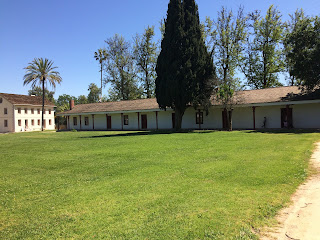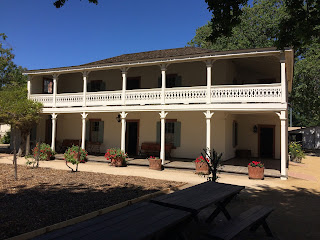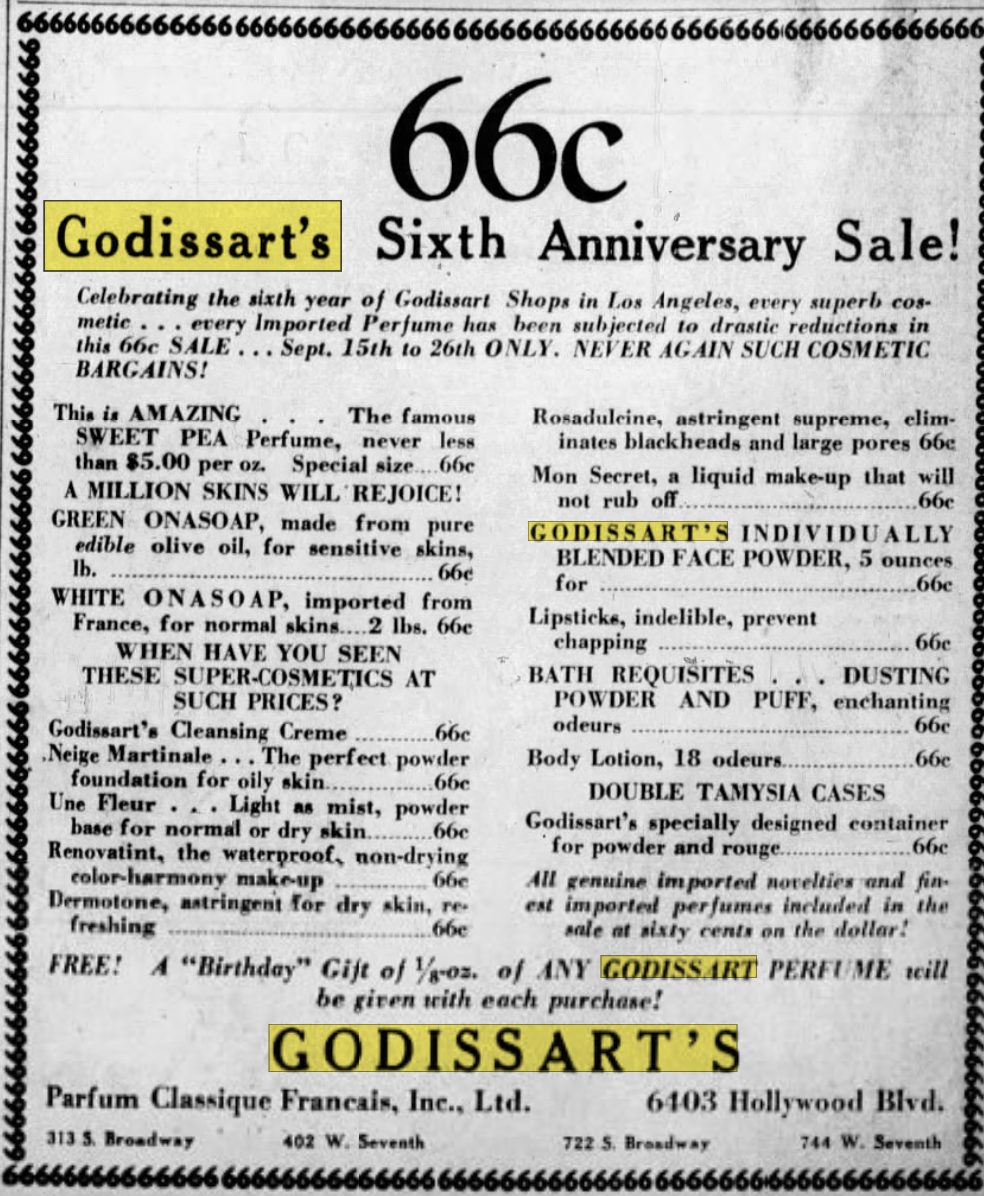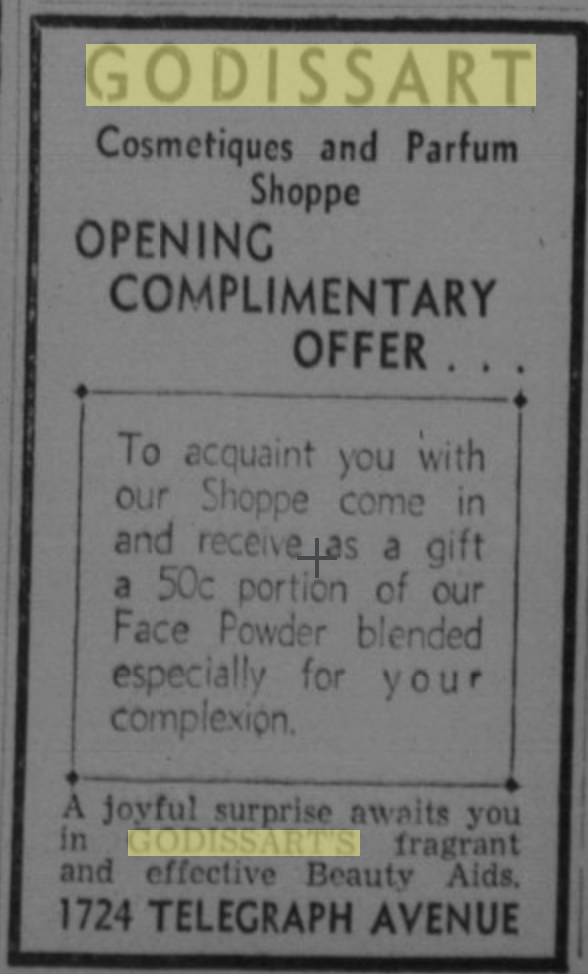Quick overview for context:
Rancho Los Encinos (sometimes called Rancho El Encino, now Los Encinos State Historic Park) was a Spanish land grant given to LA's first mayor, Francisco Reyes. When the authorities discovered Reyes had been mistreating his Native American hired hands, they revoked the grant and Governor Pio Pico reassigned it to three of the very same workers Reyes had been exploiting.
Don Vicente de la Osa bought the rancho from the Tongva ranchers, raised cattle, built the adobe house that still stands on what's left of the property (it's the second oldest structure in the Valley), turned the house into a stagecoach stop and roadhouse when the cattle market collapsed, and eventually sold the rancho to a Yankee named Jim Thompson.
Jim Thompson sold Rancho Los Encinos in 1869. The buyers, Eugene and Philippe Garnier, were immigrants from France. (There were other Garnier brothers - Abel, Camille, and Léon, but little is known about them except that Camille and Léon were two of the city's biggest spenders and could often be seen dining at one of Victor Dol's restaurants.)
Philippe merits his own entry, and you'll understand why when you read it. Anyway...
 |
| Faux marbre dining salon at Rancho Los Encinos |
Like so many other French immigrants who settled in Southern California in the 19th century, the Garniers were in the sheep business, and had a reputation for producing high-quality wool.
The rancho was still on the stagecoach route (today it's Ventura Boulevard). And, being from France, the Garniers knew how to top even Don Vicente's fine hospitality.
The brothers had the adobe's dining room painted with stunning faux marbre panels. Despite being almost 20 miles from what was then the heart of the city (long before the 101 existed...or, for that matter, the car), the Garniers served such good food that Andrés Pico - brother of Pio Pico - made a point of bringing VIP guests to the rancho for breakfast. In those days, it was a tiring, 15-mile horseback trip on a dirt road from Pico's house. I can't even imagine getting up before dawn and spending a couple of hours on a rough, sweaty horseback ride just to eat breakfast in Encino*, but apparently it was worth the trip for Pico and his guests.
Eugene built a two-story limestone house - a copy of the family home in France - opposite the adobe. The Garniers lived in the adobe; the limestone house was a bunkhouse for the ranch hands and for tired travelers. Today, the house is Rancho Los Encinos' visitor center.
 |
| Eugene Garnier's French farmhouse at Rancho Los Encinos |
Rancho Los Encinos had its own freshwater spring - a VERY desirable feature anywhere in Los Angeles County, and especially in the hot, dry San Fernando Valley. Eugene built a brick-lined pond to collect the spring water - and he took care to shape it like a Spanish guitar. Novelty shaped swimming pools - i.e. Jayne Mansfield's heart-shaped pool - may well owe a debt to Eugene Garnier's guitar-shaped pond.
Eugene put a great deal of work into making Rancho Los Encinos what it was at its peak - and what it still is today.
Unfortunately, it wouldn't last.
In the late 1870s, the wool market collapsed. And it couldn't have collapsed at a worse time for the Garniers, who had overextended themselves financially during a brutal drought that dried up their grazing fields. And to make matters worse, the roadhouse business had waned due to fear of stagecoach robbers...followed by stagecoach service ending when the railroad came to Los Angeles in 1876.
The Garniers continued to run a tavern on the premises, but like so many other French immigrants in the sheep trade, they had to find a new primary source of income.
Isaac Newton Van Nuys, who owned most of the southern Valley, had introduced dryland grain farming a few years previously. It was a no-brainer for the Garniers to turn their grazing land into wheat fields.
Unfortunately, there was the matter of their other neighbor, Don Miguel Leonis.
Leonis, possibly the most ambitious transplant in the history of Greater Los Angeles (and THAT is saying something), snapped up land whenever he could, and controlled most of the western Valley. Rancho Los Encinos, right next to Leonis' Rancho El Escorpion, was a very desirable property - especially because it had its own supply of fresh water.
You know where this is going, right?
In 1878, Eugene Garnier stated, under oath in a Los Angeles courtroom, that Leonis and his hired thugs had beaten the Garniers' hired hands and burned the rancho's wheat fields.
When asked if Leonis was his enemy, Eugene confirmed this, adding that he was forced to testify and that he would not be in the same courtroom with Leonis if he'd had a choice.
Having lost their wheat crop, the Garniers couldn't pay the bills anymore, and the rancho was bought at auction by Gaston Oxarat (who had previously obtained a lien on the rancho when he loaned money to the brothers).
Eugene Garnier went back to France soon after that day in court, never to permanently return to Los Angeles.
But can you blame the guy? He just couldn't take it anymore.
*This is not a snobby Westsider jab at Encino. I'm from Sherman Oaks.








































